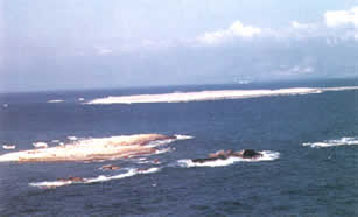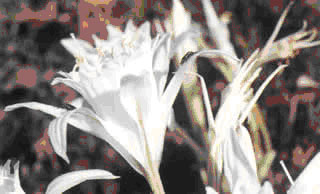(North Lebanon/ Tripoli)
A group of three rocky limestone islands with a maximum elevation of 6 meters, they are often flooded during storms. They lie 13 km north-west of Tripoli in the Mediterranean Sea. Palm Island (Jazirat al-Nakhl or Ile du Palmier) is the largest (20 ha), and has sandy beaches on its north and east sides.
There is some plant life in clefts in the limestone but the islands are generally bare. In spring they are carpeted with wildflowers. On Palm Island there are also some small ponds, boggy areas and stands of reed.
Sanani (4 ha) Ramkine (1.6 ha) and Palm Island (20 ha) together with 500m of their surrounding sea, make up the Palm Islands Nature Reserve. The Reserve was established in 1992, and is designated a Mediterranean Specially Protected Area under the Barcelona Convention, an Important Bird Area IBA by Bird Life International, as well as Wetland of Special International Importance.
The endangered Loggerhead and Green Turtles lay their eggs in the sandy beaches of the islands. The number of turtle nests increased from 3 in 1997 to 31 in 1999. The endangered Mediterranean monk seals have returned to the islands and might become re-established there. Migratory and other bird species that disappeared during the war years have been returning. At least 157 species (of which are 42 migratory species) had been observed as of 1999.
Underwater sea sponges and all types of fish are also coming back. Palm Island is known in Arabic as Rabbit Island for the large population of rabbits which were introduced there in the late 50’s. The rabbits have been removed because they ate the many rare plants and young palm trees that survive in this salty environment.The islands are not inhabited but fragments of pottery, a freshwater well, and the remains of a church built at the times of the Crusaders on Palm Island indicate a past with human occupation.
Ramkine Island contains cannon emplacements and underground galleries built early this century and an old lighthouse, fitted recently with solar power.
Parts of the Reserve are open for swimming and snorkeling during the summer, but the remainder year, it is a quiet haven for wildlife. Threats to the Reserve are disturbance of birds by visitors, illegal hunting, collection of seabird and turtle eggs, and pollution from oil and garbage from Tripoli.
Environmental groups consider using the site to monitoring the large migration of waterbirds along the coast (egrets, ducks, waders, gulls) and for observation and ringing of migrant birds; of which over 300 species were recorded by 1974.
In 1980 the site was listed as a Wetland of International Importance.
sources: www.wetlands.org ; www.undp.org



